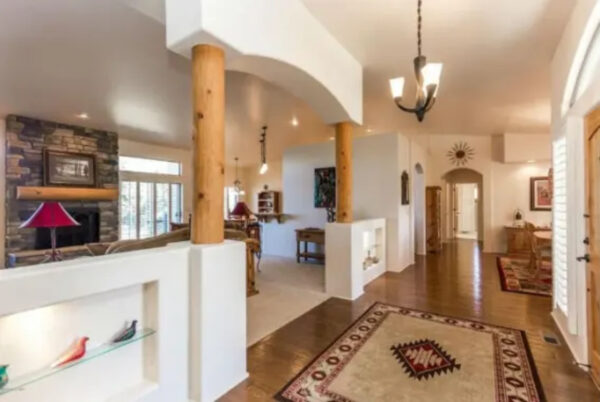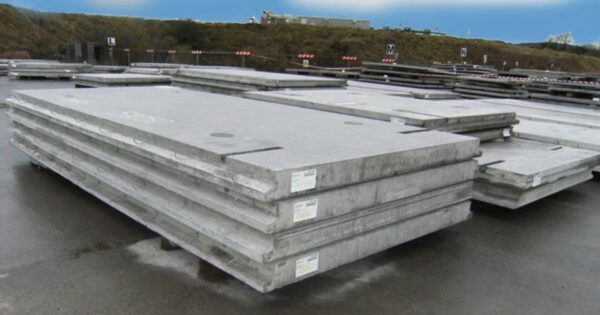Wall textures add visual interest and dimension to interior walls. Proper texture application helps hide imperfections, provides desired aesthetic effects, and improves wall durability.
This article discusses the purpose, types, and best practices for wall texture design.
What is Wall Texture Design?
Wall texture refers to the visible surface characteristics and irregularities of a wall material. It is created through the application of coatings like paint, plaster, wallpaper or by manipulating base materials like drywall.
Wall texture design is the intentional choice and creation of desired wall surface qualities for aesthetic, functional and protective purposes.

Purpose of Wall Texture Design
Well-designed wall textures serve multiple purposes:
- Aesthetics – Textures create visual appeal through light and shadow effects adding depth. They establish interior design themes.
- Hide Imperfections – Textured coatings disguise flaws in wall surfaces like cracks, holes, uneven drywall seams etc.
- Durability – Textured paints and veneer plasters provide added surface protection from dents, scratches etc.
- Improve Acoustics – Texturing absorbs sound waves reducing echo and transmission to other rooms.
- Ease of Cleaning – Smooth wall textures allow easy dusting and wiping. Rough textures hide stains.
Advantages of Wall Texture Design
- Cost-effective way to renovate walls
- Endless design options for unique spaces
- Ability to match existing textures for repairs
- Wall protection from everyday wear
- Customized solutions for each room’s needs
- Easy change of interior design themes
Types of Wall Textures
Interior wall textures can be categorized into:
Paint Textures
Paint textures are economical, offer extensive design options and easy application. Types include:
- Flat – Smooth, velvety, matte finish. Shows imperfections.
- Eggshell – Slight sheen, hides imperfections. Easy to clean.
- Satin – Medium luster. Durable, stain-resistant.
- Semi-gloss – High sheen. Used for bathrooms, kitchens. Scrubbable.
- High-gloss – Mirror-like perfect smoothness. Enhances colors.
- Sponge/Rag Painting – Varying paint absorption effects.
- Stippling – Dabbed on speckled texture.
- Color Washing – Translucent layered colors.
Plasters & Coatings
Plasters add thicker textured finish for high durability and aesthetic depth. Types are:
- Veneer – Very thin textured gypsum or lime plaster coating.
- Popcorn – Stucco-like cottage cheese finish. Fire resistant.
- Knock Down – Troweled then flattened texture. Orange peel look.
- Skip Trowel – Grooved combed trowel patterns.
- Sand Textures – Fine aggregated finish.
- Metallic – Iridescent mica or glass flakes.
Wallpapers
- Traditional wallpaper with embossed textures
- Faux finish vinyls with natural stone, brick, wood effects
- Removable peel & stick papers
- Fabric wrapped panelling
- Metallic foils and mylars

Suitability of Wall Textures for Rooms
Appropriate wall textures should suit each room’s needs:
- Living Rooms – Medium textures hide everyday scuffs. Eggshell or satin paints. Troweled plaster textures. Grass-cloth wallpaper.
- Bedrooms – Subtle textures in matte or flat paints. Metallic accent walls. Faux finishes.
- Bathrooms & Kitchens – High-gloss paint. Water-resistant wallpapers or wainscoting. Scrubbable textures.
- Kid’s Room – Durable washable finishes like gloss enamels. Creative sponge or rag textures. Wall decals over textured paint.
- Home Office – Low-sheen paints limit glare. Acoustic wall panels absorb sound. Grass-cloth wallpaper.
Modern Textured Wall Design Ideas
Current trends combine textures with metallic, industrial or nature-inspired elements:
- Exposed brick walls
- Faux concrete finishes
- Peel-and-stick shiplap wood
- Corrugated metal wall cladding
- Patterned or embossed vinyl papers
- Troweled resin panels
- Geode, quartz or agate backsplashes
- Rustic wood planks in herringbone patterns
- Natural woven fibers like jute, hemp bundles arranged artistically
- Murals with heavily textured topcoats
Thickness of Veneer Plaster Wall Textures
Veneer plaster coatings provide durable decorative textures with just 1/16th to 3/32nd inch thickness.
Base coat plaster fills unevenness. The thin veneer top layer creates desired appearance with aggregated add mixtures imparting texture.
Metallic plaster veneers have non-rusting aluminum silicate compounds for sheen. Venetian topcoats with mica or colored quartz flakes mix offer unique aesthetics.
Smoothing Wall Unevenness with Skim Coat
Minor wall imperfections can be rectified by professional skim coating for under $2 per square foot. It involves:
- Filling cracks and holes with spackle
- Sanding bumps, ridging and protruding drywall joints
- Applying watered down air-drying joint compound to entire wall surface
- Smoothening compound with flat trowels and broad knives
- Lightly sanding final thin plaster coating when dry
The smooth surface allows uniform application of paint and textures.
Creating Faux Finishes with Troweled Textures
Faux finishes like Venetian plaster simulate appearance of ornate surfaces using special troweling techniques with thin 1/16th inch gypsum and lime mixtures costing $3-7 per square foot.
Multi-layering with different tools creates depth and contours. Final protective acrylic glazing seals the decorative finish.
Looks created include polished marble, Travertine stone, antiqued stone effects etc. These elevate room aesthetics in a cost-effective manner compared to natural building materials.
Resin Panels for Contemporary Wall Textures
3D textured wall panels from eco-resins create lavish contemporary interiors. Made from plant fibres like straw or bamboo blended into natural resins, these modular panels install over existing surfaces.
Glossy surfaces refract light randomly producing mesmerizing visual effects. Shapes include intersecting blocks, convex curves, wavy patterns and terrazzo aggregates.
Though expensive at $100-500 per 4×8 feet panel, minimal use on one accent wall imparts lavish appearance.
Peel-And-Stick Wallpaper with Natural Textures
Modern peel-and-stick wallpapers offer quick upgrades. These can be applied directly over existing finishes using the mess-free dry application method which eliminates wall prep.
Hundreds of digitally printable faux finish options now exist with natural wood grains, stones, marbles and glitters at just $5-8 per square foot.
Low commitment temporary papers allow changing room themes effortlessly.
DIY Instructions for Sponge Paint Texture
A simple DIY faux finish created by dabbing paint with a crumpled sponge creates intriguing visual depth. How-to steps are:
- Prep walls and apply base coat semi-gloss paint
- Pour small amounts contrasting paints on disposable plates
- Dip irregular sponge into paint puddles
- Randomly dab walls lightly twisting sponge
- Overlap dabs for multi-tonal abstract patterns
- Stand back to visually review application density
- Add accents by wiping edges with a rag
Sponging requires some skill which improves with practice. It beautifully transforms boring flat walls affordably.
Conclusion
Wall textures design requires thoughtfully addressing functionality along with selecting finishes suiting interior themes.
Skillful faux treatments by home DIYers or contractors transform spaces dramatically without huge investments.
Periodic texture upgrades provide fresh appealing interiors reflecting personal style choices.






